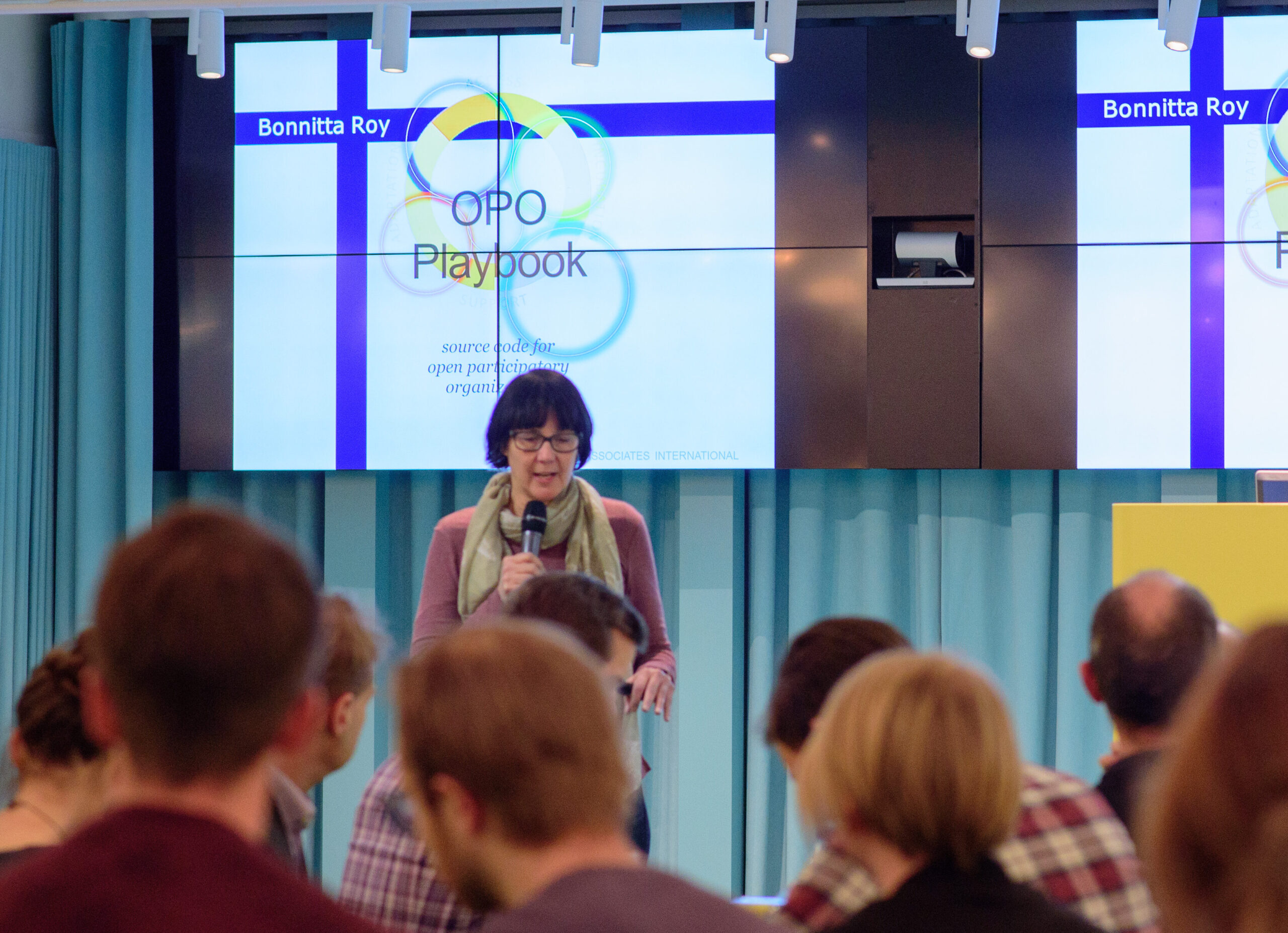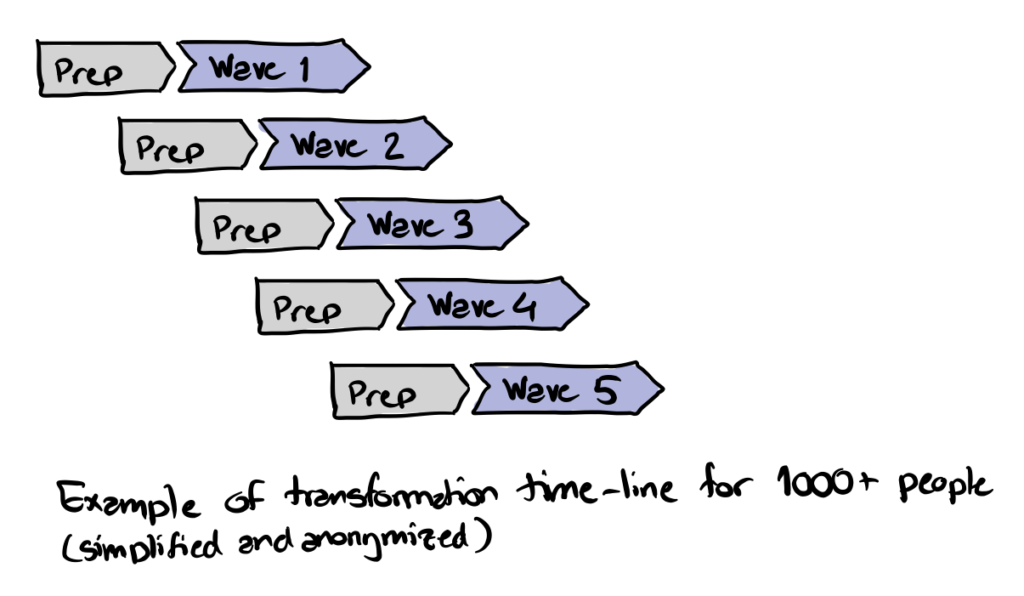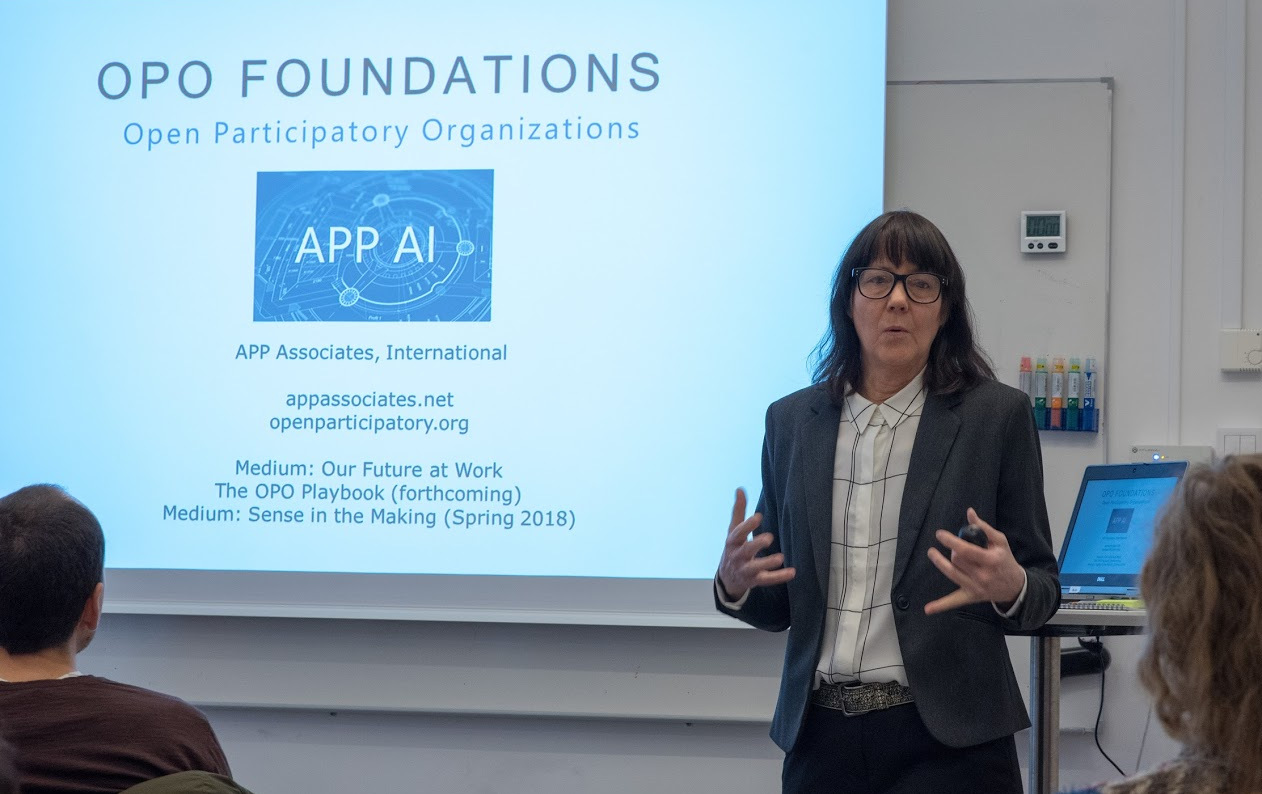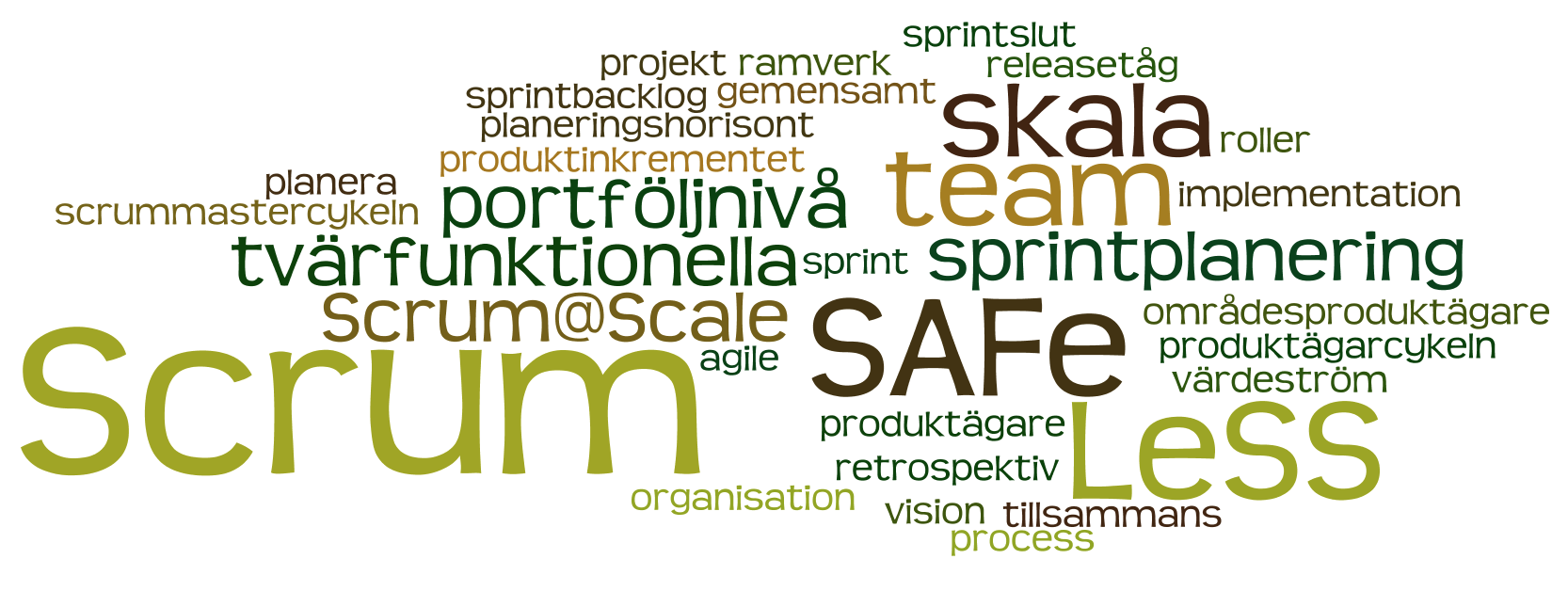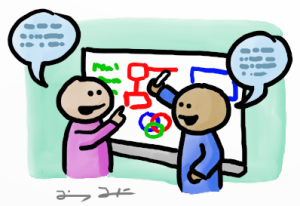We spoke with Bonnitta Roy about her upcoming Master Class in this year’s leading complexity program for the fall. The topic is Thinking with Complexity: Post-Formal Actors, Protocols, and Complex Potential States. Bonnitta is an author, researcher, complexity thinker, business developer, and teacher. She integrates many fields: Natural Sciences, Living Systems, Consciousness Studies, Relational Processes,
Continue readingAdvice to become ready for a transformation
How to prepare and align as a leadership team for a major change in your organization
You are a senior leader in your organization, and you are facing some challenges. You have had that slow hunch for some time now that there are plenty of things that are just not right. Things beyond just individual isolated problems. People in your organization often bring up small things that should be looked at because they seem to be connected to plenty of recurring friction points in several places that hold people back.
You have also come to realize that there are a few big things we have to change to really tap into our potential. If we don’t, our goals may never come within reach. Maybe even worse, we may risk losing ground.
You feel you share this view with some of your colleagues on your senior leadership team. But you are not certain to what extent they see what you see and how they would explain what needs to change.
You want to take the initiative, but you are not sure about how.
How do we know if we are ready to start a major change effort, and what do we need to do to get there if more work is needed?
Video: Improve your decision making under uncertainty, using four simple techniques
4 simple techniques to improve decision making, in time of uncertainty
Continue readingDriving Change in a VUCA world
If the acronym VUCA hasn’t made sense so far, then in these pandemic Covid-19 times it surely must. The acronym stands for Volatile, Uncertain, Complex and Ambiguous. So when people refer to a VUCA world, they refer to a world where you cannot possibly foresee everything ahead of time (if anything, really). This is true to the whole world – the planet Earth, but also to the world, or context if you like, in which you and your organization operate.
Continue readingEn definition av Agilt mindset

Vad är ett Agilt mindset och hur beskriver man det?
Det är en fråga jag fick finna svar på i och med det sista tillfället i Scrum Master programmet Mia Pilebro (agil coach på arbetsförmedlingen) och jag genomförde på Arbetsförmedlingen. Denna artikel beskriver den definition jag landade i, resonemanget bakom samt varför detta är viktigt då man förändrar en organisation mot en Agil kultur och arbetssätt. De definitioner jag hittade när jag sökte svar på frågan kändes inte kompletta, enligt mitt tycke. Efter diskussion med mina kollegor på Crisp, och med Mia, landade jag i en definition som består av ett antal påståenden, hållningar och en intention.
Continue readingFörutsättningar för en positiv grupputveckling
Jag utbildade mig nyligen till handledare för försvarshögskolans koncept Utvecklande Ledarskap (UL); fem mycket inspirerande och lärorika dagar. Förutom ny kunskap har jag dock också med mig upplevelsen kring kraften i grupputveckling när den blir som bäst. Under kursen satt och jobbade vi i kvarteret där vi både hjälpte varandra förstå kursinnehållet men också förberedde och genomförde en del av den normala UL-kursen inför övriga kursdeltagare. Det är fascinerande hur starkt relationerna inom en grupp kan utvecklas, och från det att en tydlig teameffekt kan växa fram, efter så kort tid som några få dagar.
Det fick mig att fundera på vad det var som hände under kursen som gjorde detta möjligt. Vid reflektionen kring hur utbildningen var strukturerad, den miljö vi befann oss i, handledarnas agerande och vad vi gjorde i kvartetterna, landade jag i att nedanstående fyra aspekter hjälpte oss till att formeras till kraftfullt team under veckan som gick:
- fokus på att bygga en trygg miljö,
- Vi hade väldigt tajta målsättningar att arbeta mot
- Det fanns möjligheten till frekvent feedback på de resultat vi skapade, samt vi gav varandra löpande feedback på varandras prestationer
- och vi var en liten och komplett gruppering som skulle lösa uppdraget tillsammans självständigt.
Evolutionär förändring
Inledning
Ser jag tillbaka på mina år som konsult och coach på Crisp har det skett en rätt stor förändring i vilka typer av uppdrag vi får. Många organisationer möter en allt mer föränderlig omvärld med snabbfotade kunder; är de inte nöjda med det utbud som organisationen levererar går det till en konkurrent i stället. Det räcker inte längre med att enskilda team fungerar bättre; hela organisationer behöver förbättras för att nödvändiga effekter skall skapas.
För att lyckas med förändringsarbetet behöver vi:
- Utgå från att organisationer är komplexa system vilket kräver en organisk förändring snarare än ett plandrivet och mekaniskt sådan.
- Genomför förändringen evolutionärt drivet genom de hinder som teamen upplever,
- Successivt forma den struktur och arbetssätt som just den specifika organisationen bäst behöver för att leverera värde.
The CTO Questions: 10 questions that help you gauge the current state of your tech operations
Ever heard this conversation play out? Manager 1: “We should adopt scaling framework Y.” Manager 2: “But scaling framework Y doesn’t have a recipe for baking cookies. So we need to do X.” Manager 3: “Whut? You’re both wrong. We have Agile teams. We’re good!” In fact, each statement above can be wrong. So the
Continue readingQ & A with Bonnitta Roy on Open Participation
Bonnitta Roy was one of the keynote speakers at last year’s Agile People Sweden conference and she also held a course here at Crisp last February on self-organization beyond the team using Open Participatory Organizations (OPO), which was very well received by our course attendants. She is coming back to Stockholm in November and we got the opportunity to sit down with her and ask some questions about open participation and her work on the future of organizational life.
What is open participation and why does it matter in organizational life today?
Organizations face continuous pressure to “level up” to new social and economic realities. This places enormous strain on legacy structures which are difficult to overhaul, and conventional management practices which are difficult to shed. Instead of offering yet another “off-the-shelf” product, we help people see simple but powerful opportunities to become more open and more participatory in their everyday ordinary work.
In agile software development there is the notion of refactoring when code has become too unruly and is increasingly built up in an ad hoc manner. Refactoring means starting over with clean, elegant code. It releases a tremendous amount of complexity from the system. Open participatory practices do the same for organizational structures. It releases complexity and affords more elegant ways to solve complex problems.
So OPO is basically a location based structure to self-organize and to self-manage in organizations?
Self-organization and self-management are core principles of open participation. Location-based-structure is one way to optimize them. It is the only way I know that also avoids the “law of suboptimization” which states that when you optimize the lower system, you suboptimize the higher (and vice-versa). This “law” leads to paradoxes in incentive systems that have to juggle rewarding individual merit, team performance, and company profits.
Locations are defined as mutually interdependent. No individual location can be defined outside of its context with larger strategic wholes; but the “whole” is not defined other than by the interdependent coherence of all the locations. The language of “location” helps reinforce the synergistic way of thinking. If you renovate your kitchen you are simultaneously adding value to your house, and to the experience of everyone who lives there. Similarly, in the OPO, people focus on making sure that the locations are healthy, and that the relationships between them are synergistic. This simultaneously adds value to the larger whole.
Let’s ask some frequently asked questions, as most readers may be new to these ideas.
Using the 7 deadly sins to motivate your workforce
So your organisation is going ”agile” and talking about ”collaborations” between teams? You, as the big boss, are starting to feel powerless and not in control of the efficiency of YOUR teams? Let me give some tips on how to turn that around so all progress can be traced back to you. I mean, as their mighty leader, you do deserve all the credit for their work.
Real World SAFe – Leapfrogging a successful waterfall company into Scaled Agile
How do you leapfrog a successful waterfall company into Scaled Agile? How do you transition into Agile when you have legacy? When your company is already successful in what it does and when it carries legacy, transitioning into Agile is a more complex challenge than starting off Agile in a green field environment. After all,
Continue readingThe iZettle Example: Decentralized Tech Development In Practice (Case Study)
Don’t stand in the way of great employees.
That’s one of the operational mantras that guide the finance technology company iZettle.
Two others are “Keep the startup spirit strong” and “Stay adaptable to changing market needs.”
In this blog post, we share some of the things we are implementing and tweaking at iZettle to keep producing great results and attracting in-demand, talented developers. My role has been to assist the tech development organization in making this work.
(Another blog post coming soon will cover the transformation of making the whole company agile, while this post focus on the practices that are put in place to keep a high performing, decentralized tech development organization at iZettle.)
Let’s begin by facing the reality of fast-growing startups.
The organizational challenges for most fast-growing startups
Most startups want a flat organization to keep their entrepreneurial juices flowing, but when new employees join in a steady stream there eventually comes the point where the founders or upper management feel overwhelmed by chaos.
Things get confusing.
Employees aren’t seen.
No one seems to know what’s going on.
What usually happens for most start-ups at this point is that bureaucracy processes start piling up. Layers of management are added, and project managers are introduced to coordinate the chaotic environment. And so are written reports for managers to send to upper management, and silos are building up between different departments. And decisions are taken somewhere else.
And then what happens?
Usually, entrepreneurial enthusiasm suffers and so does talent motivation and speed of innovation.
And that is exactly what iZettle wants to prevent.
But that is easier said than done when a company grows like a wildfire.
Warning! These 6 Pitfalls Will Slow Down Your Organization

You have probably read about “at scale” implementations, activity based offices, globally distributed teams, SAFe, Agile transformations and outsourcing. Beware. Danger can be lurking beneath the surface of these popular phenomena.
Reactions to “No CEO” by the BBC
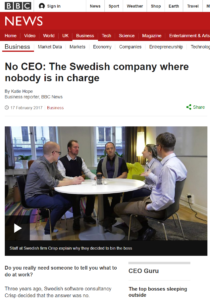
When the BBC published their “No CEO” piece where Crisp is featured with an article and a 4 minute video, there were a lot of reactions. Friends cheered on Facebook. Colleagues gave a thumbs up on LinkedIn. The article was featured on Hacker News and Slashdot. Here are our reflections on some of the comments we found.
Transforming the pyramid to an agile org
I recently published a video exploring how an agile team based organization could look like. How does it function under the hood? In the video I also discussed how you get there.
I got tons of great feedback so I decided to provide the contents of the video in the format of a blog. If you prefer to read instead of watching a 11-minute-long video, then this is for you 🙂
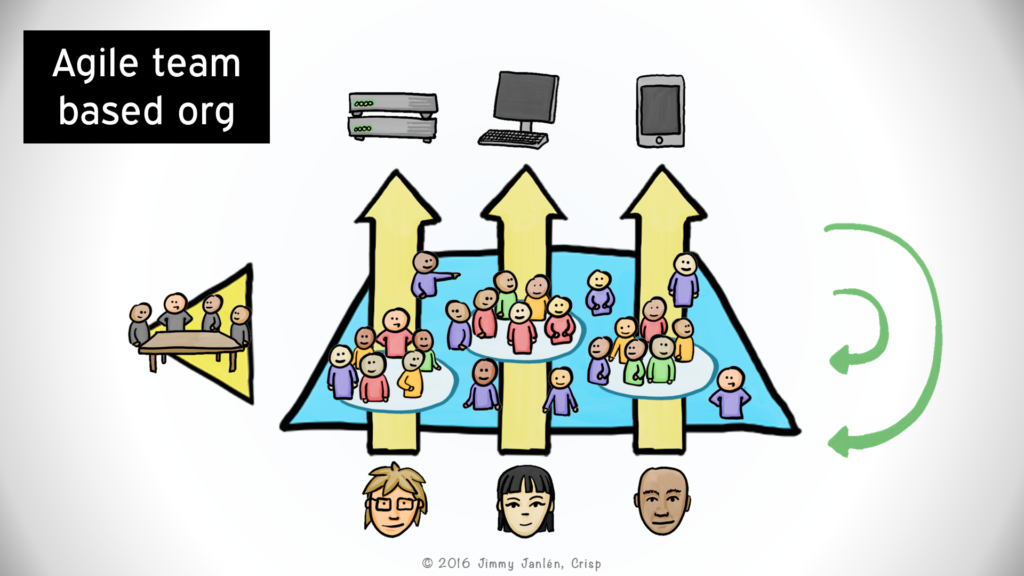
Scrum med flera team
Att organisera flera Scrum team görs på en hel del olika sätt. Här beskriver vi likheter och skillnader mellan några av de ramverk som vi har stött på hos våra kunder och utbildare, LeSS, SAFe och Scrum@Scale.
Gemensamt för LeSS, SAFe och Scrum@Scale
I alla tre ramverken utgår man från att man i botten har vanliga Scrum-team som är tvärfunktionella och självorganiserande.
Man utgår också från att vi alltid försöker bryta ner kraven vertikalt, så att varje inkrement blir så litet som möjligt men ändå kan driftsättas separat.
Underförstått är även att man kör kontinuerlig integration och automatiserad regressionstestning, och att man efter varje sprint har en produkt som går att driftsätta ifall man så väljer.
Bimodal IT is not the goal
In 2014 Gartner introduced bimodal IT. Since then quite a lot has been written and said about it. And just recently it popped up at two different clients almost simultaneously. After reading articles, watching webinars and listening to what people say about it, I’m a bit worried that organizations think Bimodal IT is the goal. I don’t think so, and I’ll explain why.
Continue reading
Introducing Lottie Knutson – speaker at Fastfeedback 2016
During extraordinary situations and crises, some people stand out and shine. One of these was Lottie Knutson. Lottie led the Crisis team at Fritidsresor during the Tsunami disaster in 2004. While governments were struggling to figure out what had happened, Lottie’s team was already hitting the ground running. Lottie will be speaking at Fast Feedback
Continue reading12 seemingly normal things Agile people do
Last week, I got this great question from Faraz (a manager for an energetic customer support crew) who is experimenting a lot with getting more Agile. “What seemingly normal things do Agile people do?” I realized that we rarely talk about the small things that effective Agile people do. What makes a great difference is rarely the big sweeping change programs, but rather, the small everyday things we do without thinking about it.
So here’s a list of 12 seemingly normal things Agile people do which we don’t pay much attention to that can make a big difference.
Whiteboard problem solving
Better meetings with the Core Protocols

Good meetings is very much about achieving deep collaboration. But collaboration is often hard. We go into meetings with different modes, intentions, and expectations. How can we make meetings both more fun and energetic? Surprisingly enough: maybe by being more formalized.
Continue reading
The importance of size and proximity
We have translated our blog on team size and proximity to english. If you prefer to read it in Swedish it’s called Storlek och närhet har betydelse. The english version you’ll find at Nomad8 site, because Jimmy Janlén is currently in New Zealand. 🙂
Continue readingStorlek och närhet har betydelse
Process är dyrt. Större team, distansarbete, deltidsarbete samt många specialister leder till mer uppstyrd process. Kanske är detta självklart, men ju fler företag vi lär känna, desto mer upplever vi detta vara något som ignoreras.
Jobbar vi i någon form av agil process såsom Scrum, Kanban, eller Lean UX värderar vi högt samarbetet mellan olika kompetenser. Ett team av olika kompetenser som kan ta en idé från start till mål brukar kallas tvärfunktionellt.
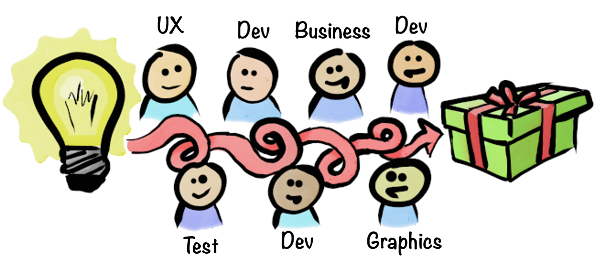
Enklast möjliga agila process för hur dessa personer kan samarbeta ser ut så här:
Continue reading
5 ways to find slack when your team is under pressure
I recently recorded a webinar where I walk through 5 ways to find slack (to invest in critical improvements), when a team is under high pressure. Enjoy! http://leankit.com/blog/2015/11/real-world-kanban/
Continue readingFluent@agile – visualizing your way of working
Help your team improve by visualizing their way working with the fluent@agile game. With the game you can help a team find out where it is on its agile journey and help it find new ways of both fine tuning and make leaps in their daily agile practices.
Me and Christian Vikström made the game together at Spotify during the spring 2014 when we were coaching and helping team to improve their agile skill sets and processes.
At Spotify the teams owns their own way of working. A team is basically only accountable to itself. We therefore needed an coaching tool that could help team take ownership of their self image and improvement strategy.
We also wanted the tool to be opinionated. It should be normative, tell what’s good and not, what kind of practices and behaviour that’s expected and not. But at the same time it should be open to new ideas, new practices and the teams local conditions.
Continue reading
Real World Kanban – interview on InfoQ
InfoQ has just released an interview regarding my latest book Real World Kanban. In this we walk through the reasons behind writing the book plus why Kanban needs to be matched by long term thinking to improve over time (aka behaviours like “don’t pass bad quality forward” matters) Check it out: http://www.infoq.com/articles/book-review-real-world-kanban ps: For anyone interested in the book, I have
Continue readingSlides from Lean Kanban France 2015
Just back from Lean Kanban France where I gave a presentation on “Learnings across Kanban case studies, and what happened next” and introduced Skarin’s law: ”The number of improvement initiatives in a kanban system is proportional to the trust members have in that systems purpose” (.. it’s never too late to introduce your own law 🙂
Continue readingLearning Lego Serious Play
Three months ago I stumbled upon a question which needed an anwer: Could Lego be used for business strategy development? I just had to go to London to find out the answer.
With a group of 12 I spent the full weekend.. building Lego! When was the last time I did that? (hint: some 30 years ago..). The real interesting part is of course the stories we tell about the models. Each time we do, the team moves closer towards a shared understanding and also generate new insights. That’s cool!
Below: Team members walking through our shared model.
A Decade of Agile, A – F
A decade of agile boils down to theses simple fundamentals and steps for me. A. Ask: do you need to improve as an organization? Only go forward if your sincere answer is yes. Ask everyone: Do you want to improve? Same procedure. Make sure you will fail (and win) regularly by commitment (plan/hypotheses) and checkpoints.
Continue readingA good decision process
A fundamental component for fluid operations is an organization’s ability to solve problems and make decisions. Any change or transformation cannot move faster than it’s ability to make decisions and communicate these. This is key if we realize that living with changes is the future status quo of operations.
Many years ago when I was still at University I got to meat a leader at production facility at Volvo, he asked us,
“How long time does it take from when the management team has made a decision and a worker on the shop floor grasps what this means?”
“Three years”.
Without a doubt, this is way to slow for product development and software. But it puts a finger on the starting point for a normal, traditional company, before any lean or agile transformation begins. So, in order to succeed with a transformation that will challenge existing (often plan based structures) we need a better decision & communication process.
Catch 22 – The egoless, present and curious leader
Every successful implementation of Lean or Agile I have seen has an ingredient that is almost a contradiction. A leader who has low ego (not interested in putting himself first) is present (he/she has active conversations with teams and other leaders such, as change never comes as a complete surprise) is active (he takes part
Continue reading